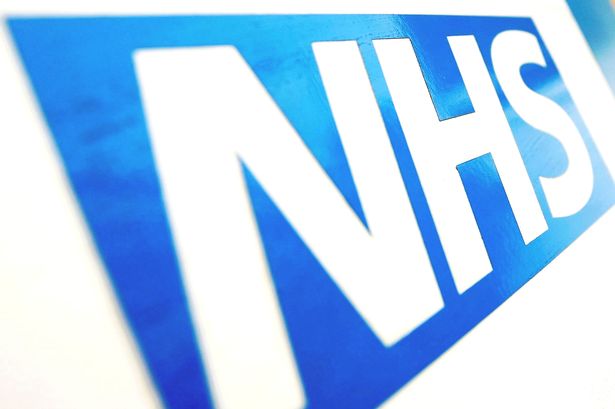Top Stories
NHS Staff Boost Patient Interaction by 25% with AI Technology

The introduction of an AI-powered tool known as Tortus has significantly enhanced the efficiency of National Health Service (NHS) staff, allowing them to spend nearly 25% more time interacting directly with patients. This improvement was highlighted in a recent trial conducted across nine NHS sites in London, which involved approximately 17,000 patient interactions, including those from hospitals, general practitioner (GP) surgeries, mental health services, and ambulances.
Tortus employs advanced ambient voice technology that combines speech recognition with artificial intelligence. This innovative tool automatically transcribes medical consultations and generates summaries for healthcare professionals, enabling them to focus on patient care rather than administrative tasks. The trial found that the use of Tortus increased direct clinician-patient interaction by 23.5% during appointments and reduced appointment lengths by 8.2%.
Stephen Kinnock, the Health Minister, remarked on the importance of such technological advancements, stating, “This is exactly the kind of innovation we need as we work to build an NHS fit for the future and end hospital backlogs.” He emphasized that by alleviating the administrative burden on clinicians, the system not only improves efficiency but also strengthens the “human connection” at the heart of healthcare.
Positive Outcomes Across NHS Facilities
The trial, spearheaded by the Great Ormond Street Hospital for Children (Gosh), demonstrated the effectiveness of Tortus in various healthcare settings. Plans are underway to implement AI scribe technology across outpatient services starting this autumn. According to Dr. Shankar Sridharan, Chief Clinical Information Officer at Gosh, “This trial is significant as it shows the NHS can lead the way in safely adopting AI.”
In emergency departments, the application of Tortus led to a 13.4% increase in the number of patients seen per shift and halved the time required for completing initial patient notes. Dr. Ahmed Mahdi, a consultant in emergency medicine at St George’s University Hospital, explained, “In such a fast-paced, high-pressured environment, every second counts. This technology allows us to be more efficient, cut down on admin, and ultimately focus on patient care.”
Economic assessments conducted by the York Health Economics Consortium as part of the trial indicate that if Tortus were implemented nationally, it could facilitate an additional 9,259 A&E consultations each day. This could potentially save the NHS £176 million in documentation time and unlock £658 million in additional capacity annually.
The Future of AI in Healthcare
As the NHS explores more ways to integrate technology into its operations, the findings from this trial underscore the potential benefits of AI in healthcare. Dr. Vin Diwakar, Clinical Transformation Director at NHS England, noted the significance of allowing healthcare providers to allocate more time to patient interactions rather than administrative duties, stating, “Improving patient care and reducing the burden of administrative tasks is essential for the future of the NHS.”
The successful deployment of Tortus across multiple healthcare settings highlights the growing role of technology in transforming patient care. As the NHS continues to innovate, the focus remains on enhancing the quality of interactions between healthcare professionals and the patients they serve.
-

 Health3 months ago
Health3 months agoNeurologist Warns Excessive Use of Supplements Can Harm Brain
-

 Health3 months ago
Health3 months agoFiona Phillips’ Husband Shares Heartfelt Update on Her Alzheimer’s Journey
-

 Science1 month ago
Science1 month agoBrian Cox Addresses Claims of Alien Probe in 3I/ATLAS Discovery
-

 Science1 month ago
Science1 month agoNASA Investigates Unusual Comet 3I/ATLAS; New Findings Emerge
-

 Science4 weeks ago
Science4 weeks agoScientists Examine 3I/ATLAS: Alien Artifact or Cosmic Oddity?
-

 Entertainment4 months ago
Entertainment4 months agoKerry Katona Discusses Future Baby Plans and Brian McFadden’s Wedding
-

 Science4 weeks ago
Science4 weeks agoNASA Investigates Speedy Object 3I/ATLAS, Sparking Speculation
-

 Entertainment4 months ago
Entertainment4 months agoEmmerdale Faces Tension as Dylan and April’s Lives Hang in the Balance
-

 World3 months ago
World3 months agoCole Palmer’s Cryptic Message to Kobbie Mainoo Following Loan Talks
-

 Science4 weeks ago
Science4 weeks agoNASA Scientists Explore Origins of 3I/ATLAS, a Fast-Moving Visitor
-

 Entertainment4 months ago
Entertainment4 months agoLove Island Star Toni Laite’s Mother Expresses Disappointment Over Coupling Decision
-

 Entertainment3 months ago
Entertainment3 months agoMajor Cast Changes at Coronation Street: Exits and Returns in 2025









